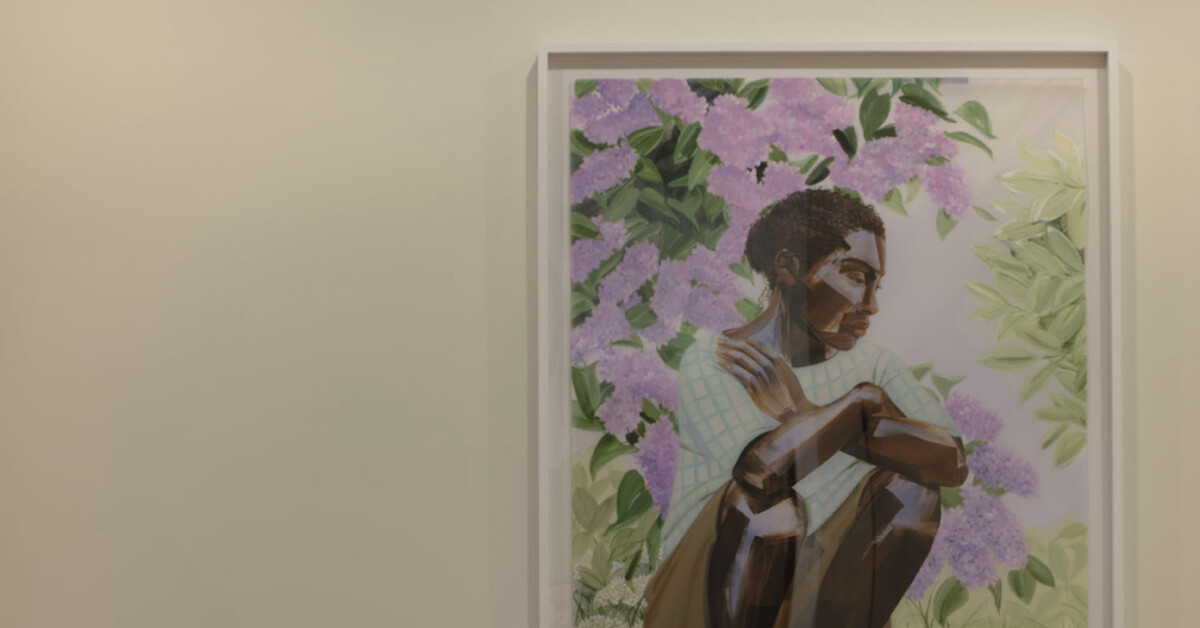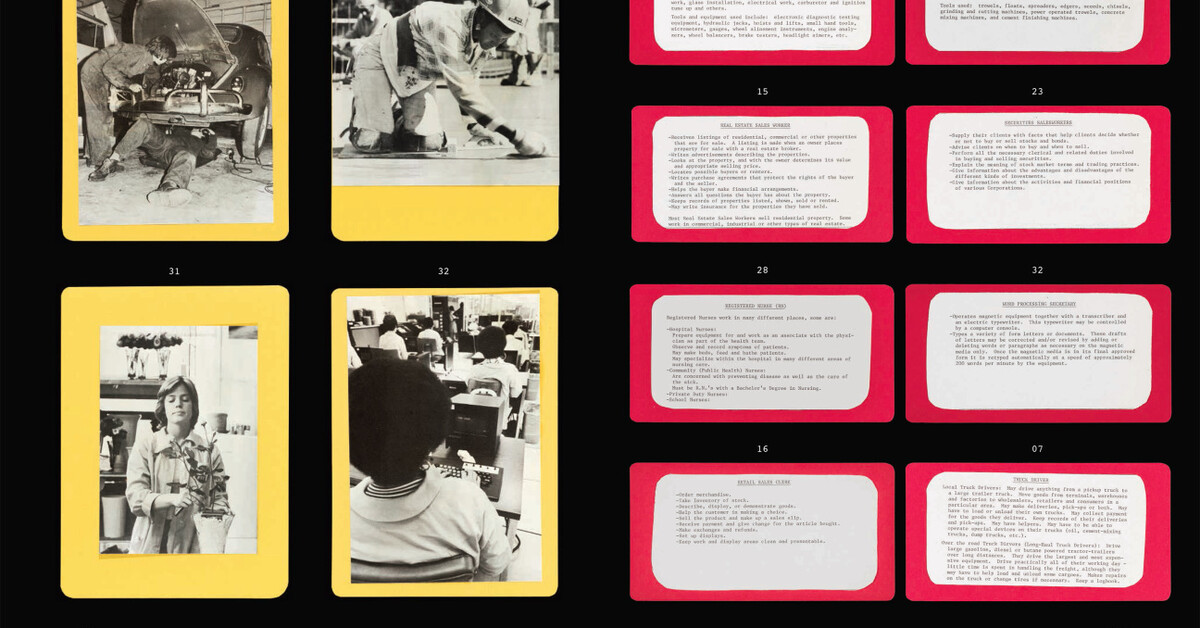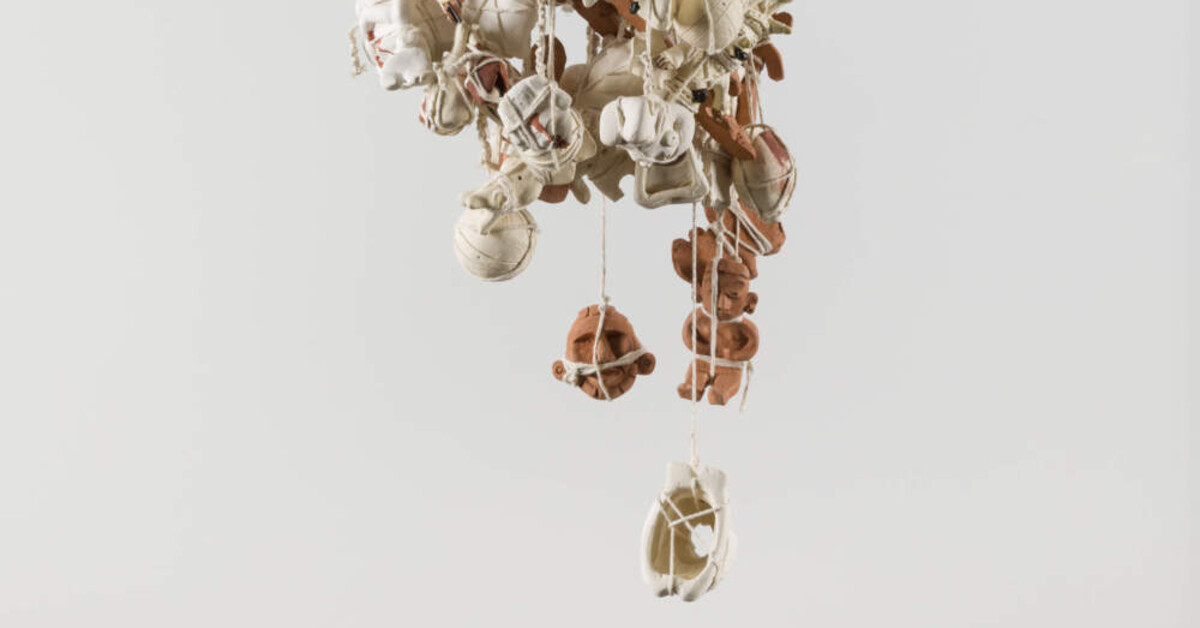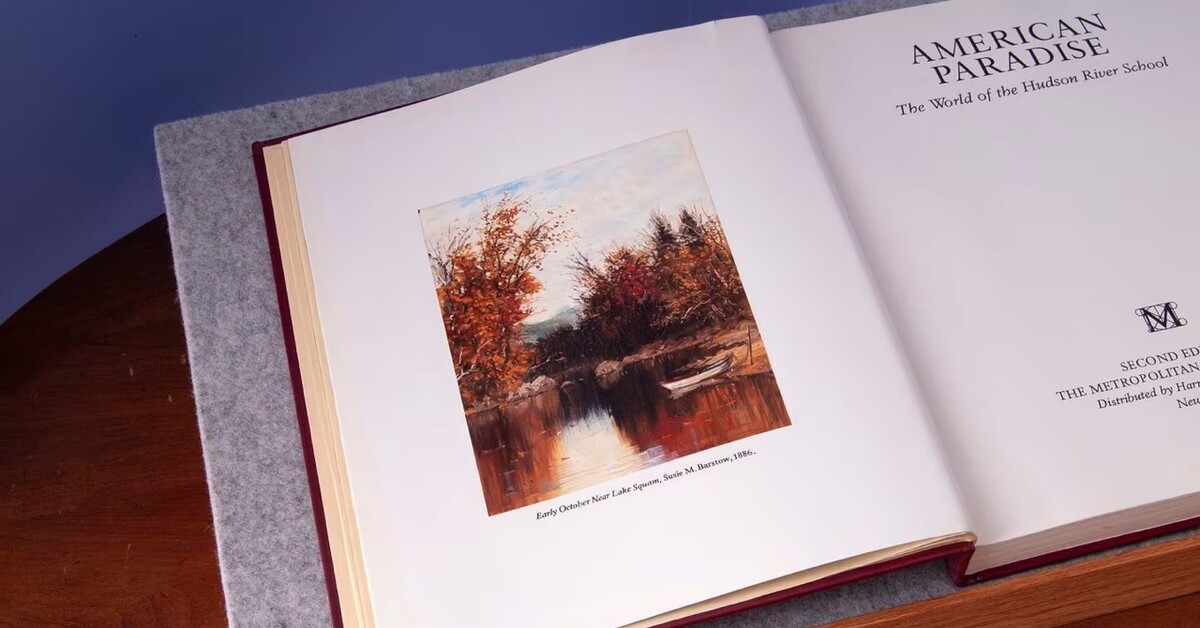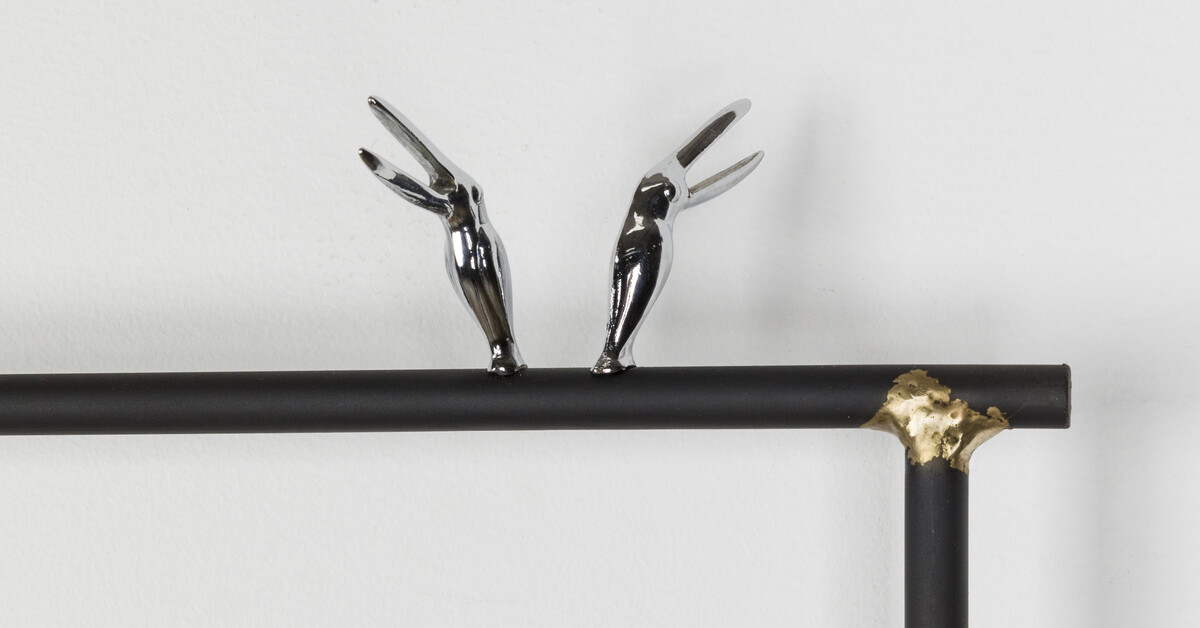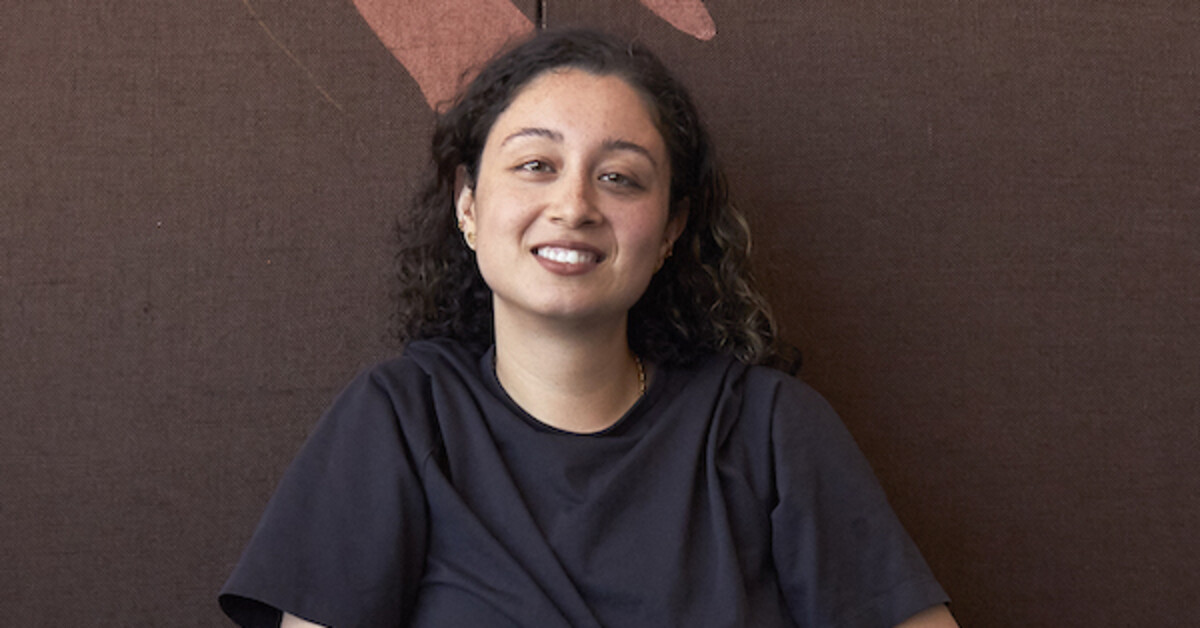A Former Doctor’s Office Is Now This Chicago Gallerist’s Art Deco Apartment
Domino / Jan 20, 2024 / by Elizabeth Kiefer / Go to Original
The “X-ray” room houses guests.

The first time Emanuel Aguilar walked through his empty apartment, he couldn’t stop marveling at its curves. The cove ceilings, crescent-shaped sconces, and subtly rounded kitchen cabinet pulls—along with an abundance of natural light—added up to a restful softness that pulled him in immediately. He was also drawn to its unique past: Situated on the first floor of a classic Chicago two-flat in the city’s Graceland West enclave, the apartment had originally functioned as the medical practice of a doctor who designed the building for live-work life in the 1920s, with his home upstairs.
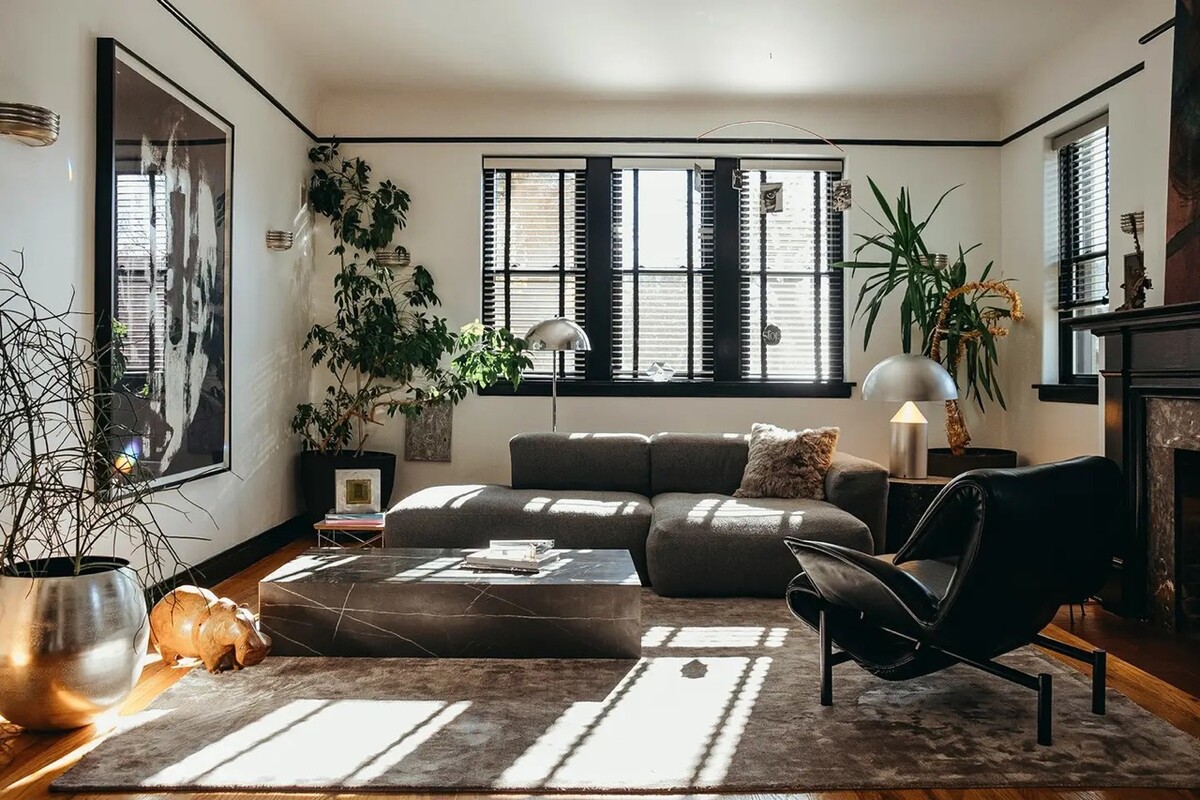
“There’s all this beautiful history in the intent of how it was built, like the little nook between the dining and living rooms that used to be the reception desk opening. I love that this space isn’t generic—it was created with a purpose,” says Aguilar, a curator and the cofounder of the contemporary gallery Patron. “It reminds me of what I look for in art.”

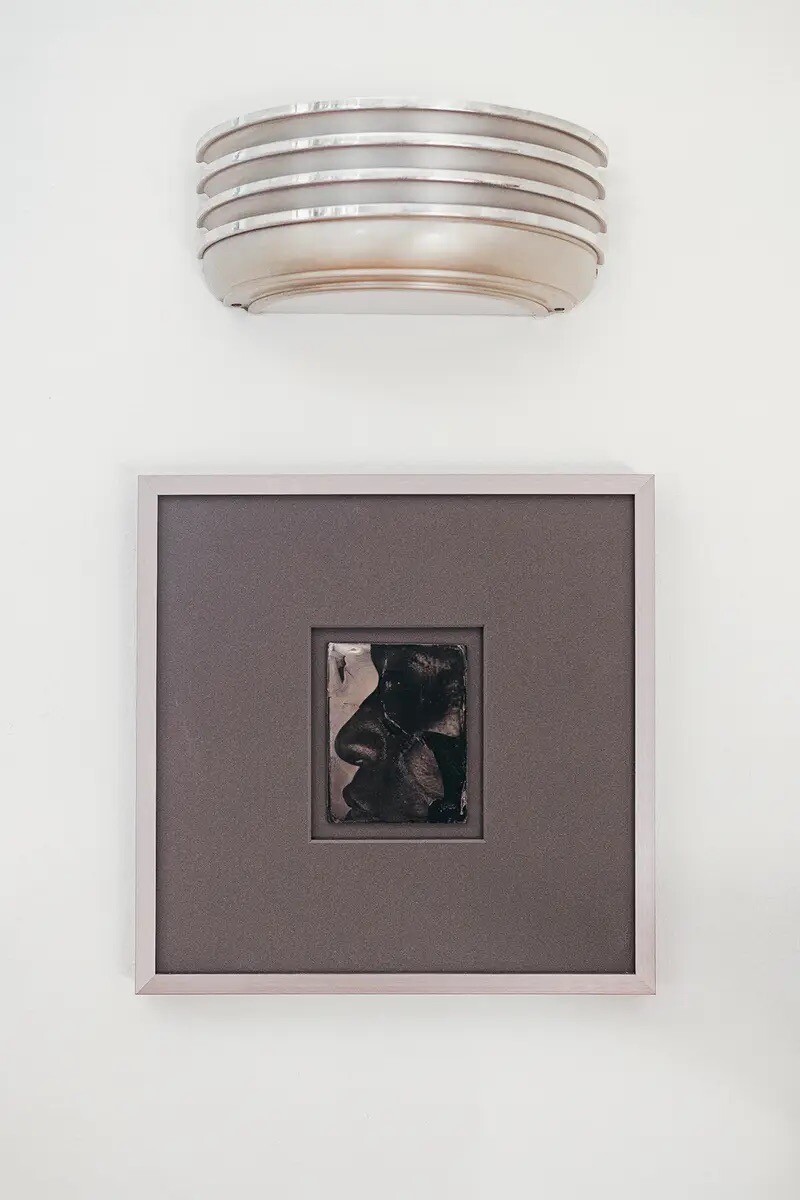
It also contained an essential feature: a high-functioning floor plan. “I watch a lot of HGTV, and I struggle with the contemporary approach to layouts where everything is just one big room. But I also love flow,” he says. Here, Aguilar found the best of both.
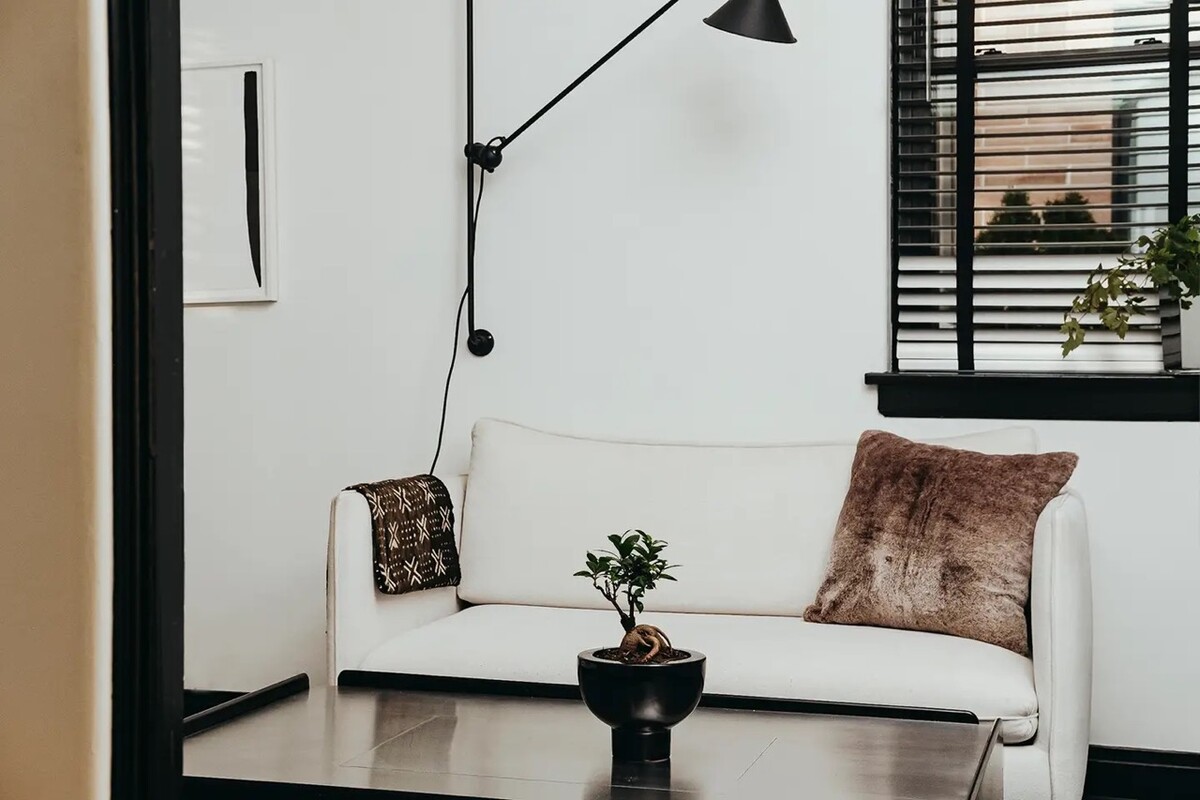
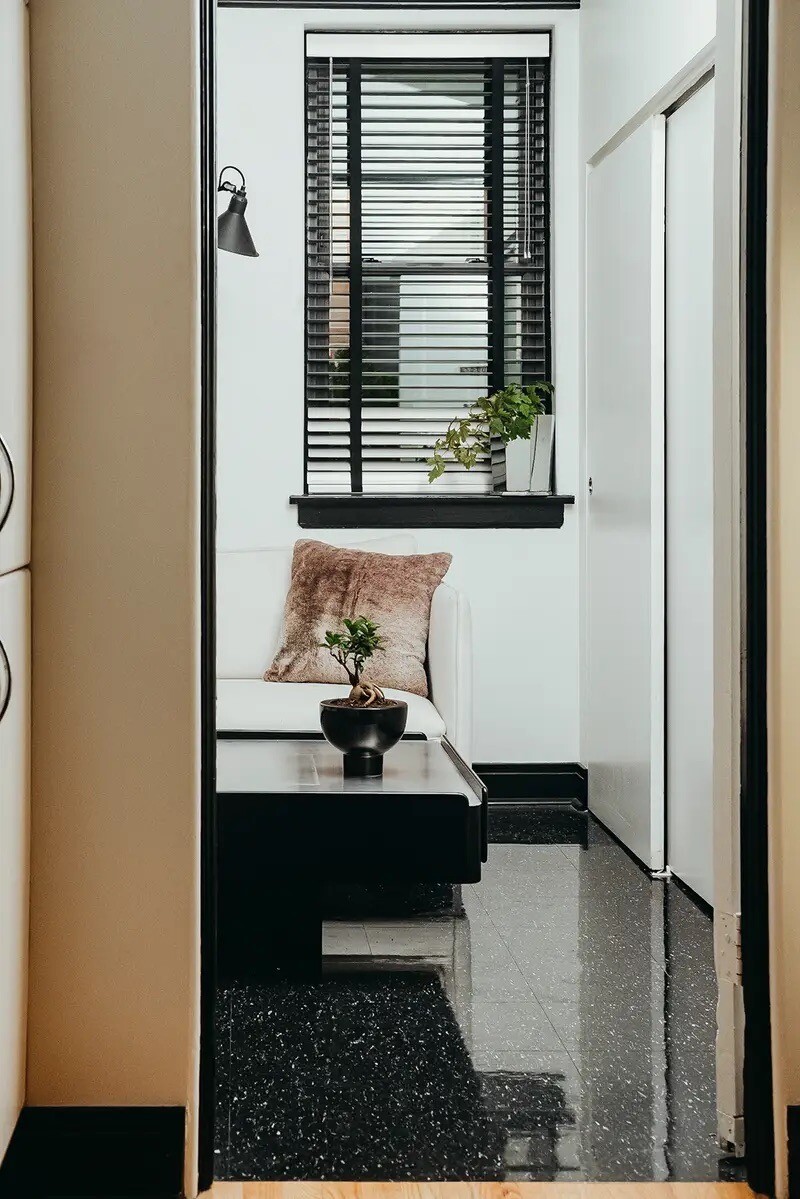
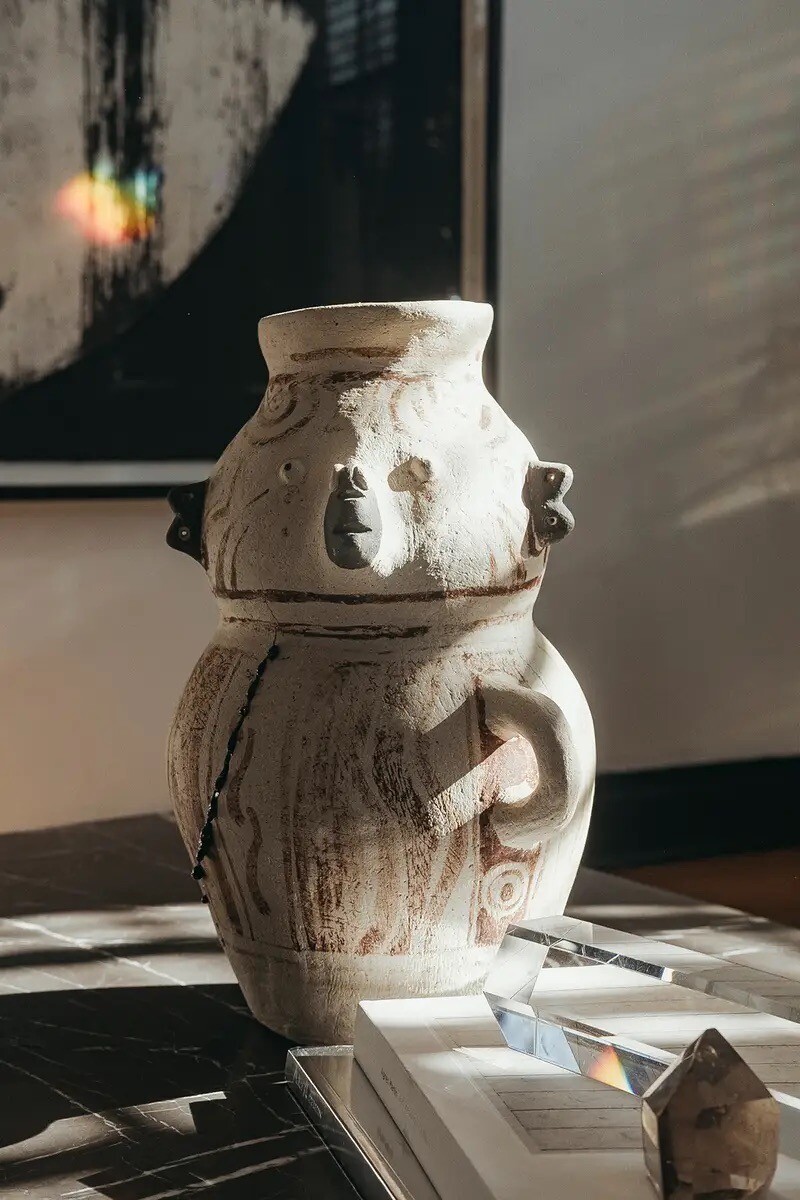
The apartment, owned by longtime friends, was in excellent shape when Aguilar got the keys, and his “renovation” required little beyond a few coats of paint. (Benjamin Moore’s “Super White” is used throughout, along with the brand’s basic black for select trim.) And while most people might have taken out the door placards, which date back to the space’s roots, Aguilar would never. He loves instructing guests to drop their bags in the “X-ray” room. The door to the basement is still marked, spookily, “Laboratory.” His own bedroom—formerly the doctor’s personal office, with the original high-shine black linoleum floors to prove it—features a “Private” door plate. The “Washroom” sign is a convenient reminder of the room’s obvious purpose.
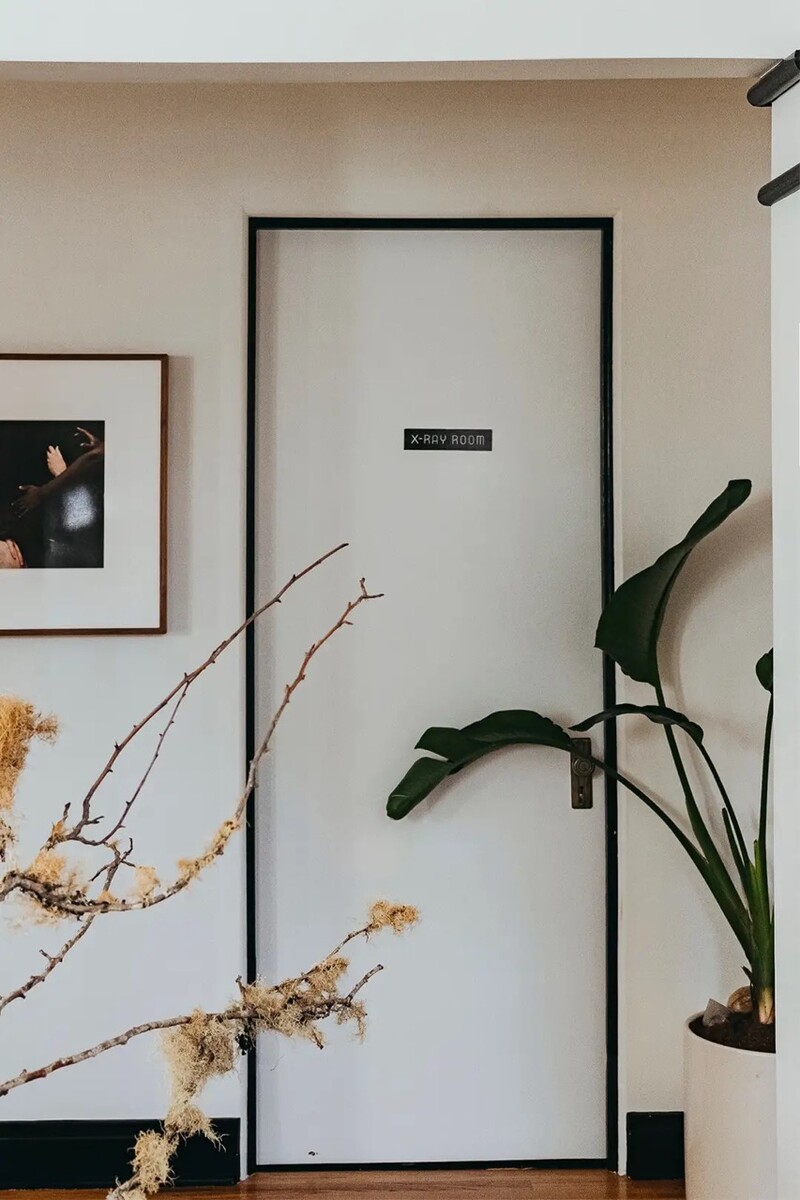
With the decor, Aguilar leaned into a grayscale palette. “I put objects with objects to tell stories for a living,” he says. “When I’m at home, I want to be able to just wander in my mind, as opposed to thinking about how red or whatever color evokes a connection to something out in the world.” Boutique and box-brand pieces are mixed with vintage finds from local dealers like Dial M for Modern, CircaModern, and Scout.
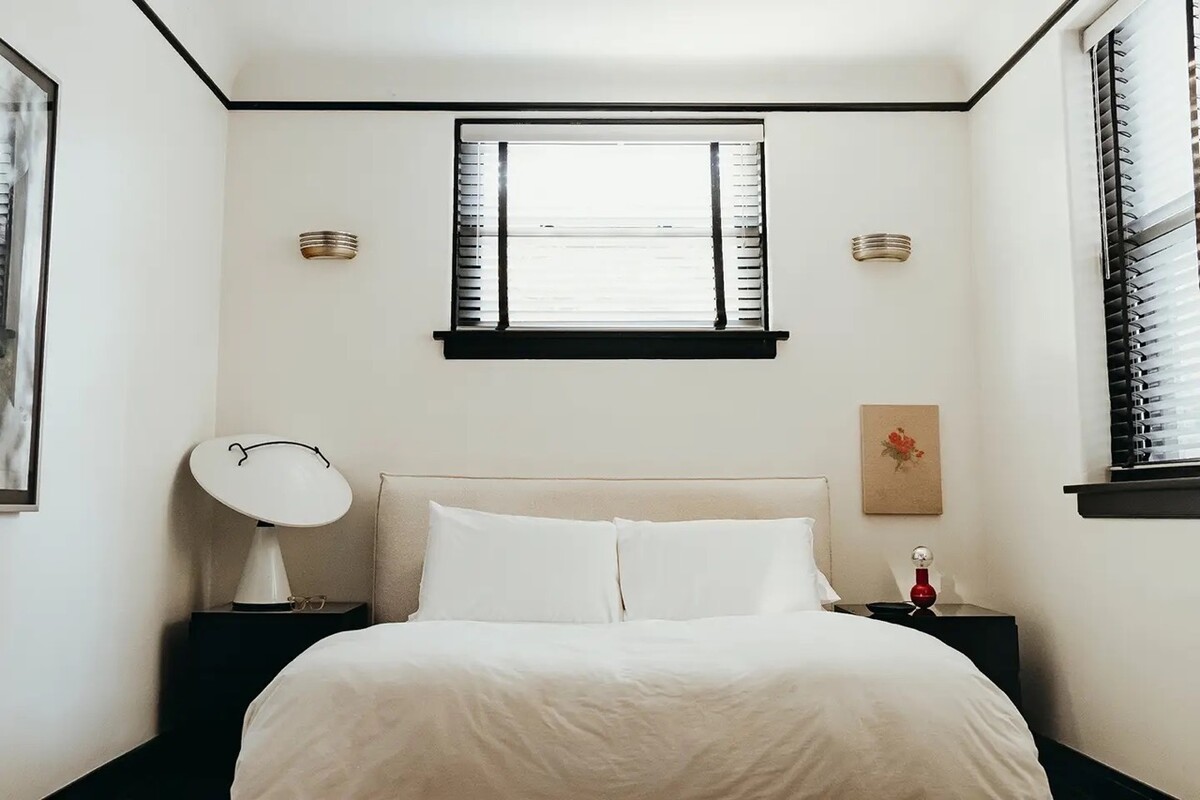
The resulting rooms put modernism and 1970s Italian design in fluent dialogue with the Art Deco architectural backdrop. Chairs by Mies Van Der Rohe flank the dining table that occupies the former exam room (the other two are Eames). A leather lounger by Vico Magistretti in the patient waiting room–turned–living room is paired with a low-slung modular sofa from Hay, and the marble coffee table is by Audo Copenhagen.
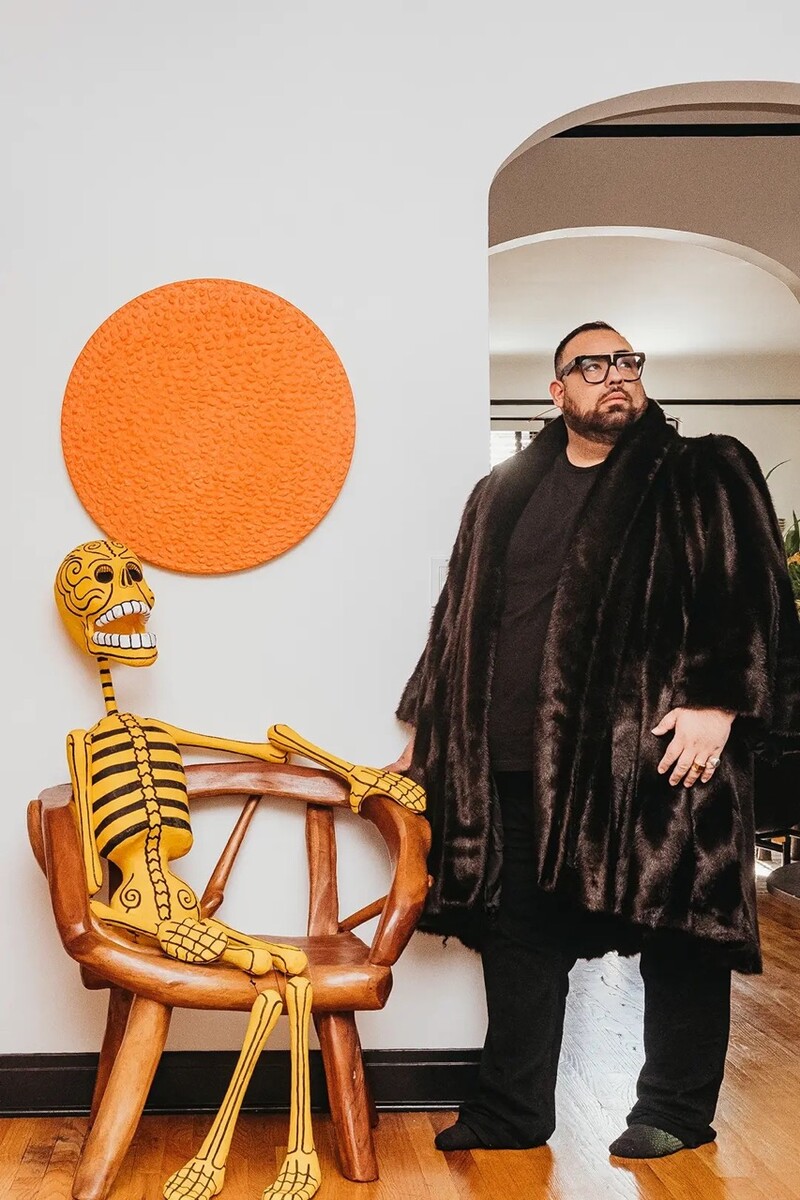
Aguilar’s expansive art collection enlivens the conversation. Guests are greeted in the front hall by a floating orange sphere—Martha (2001) by McArthur Binion—and a life-size papier-mâché skeleton purchased in Coyoacan, Mexico, near Frida Kahlo’s Blue House. A large gestural abstract by Brooklyn-based artist Kaveri Raina, titled Revolt; Internal Brewing Slow Rage (2021), sits on the mantel in the living room. (The stunning fireplace, however, is not working at the moment. “It’s conceptual,” Aguilar jokes.)
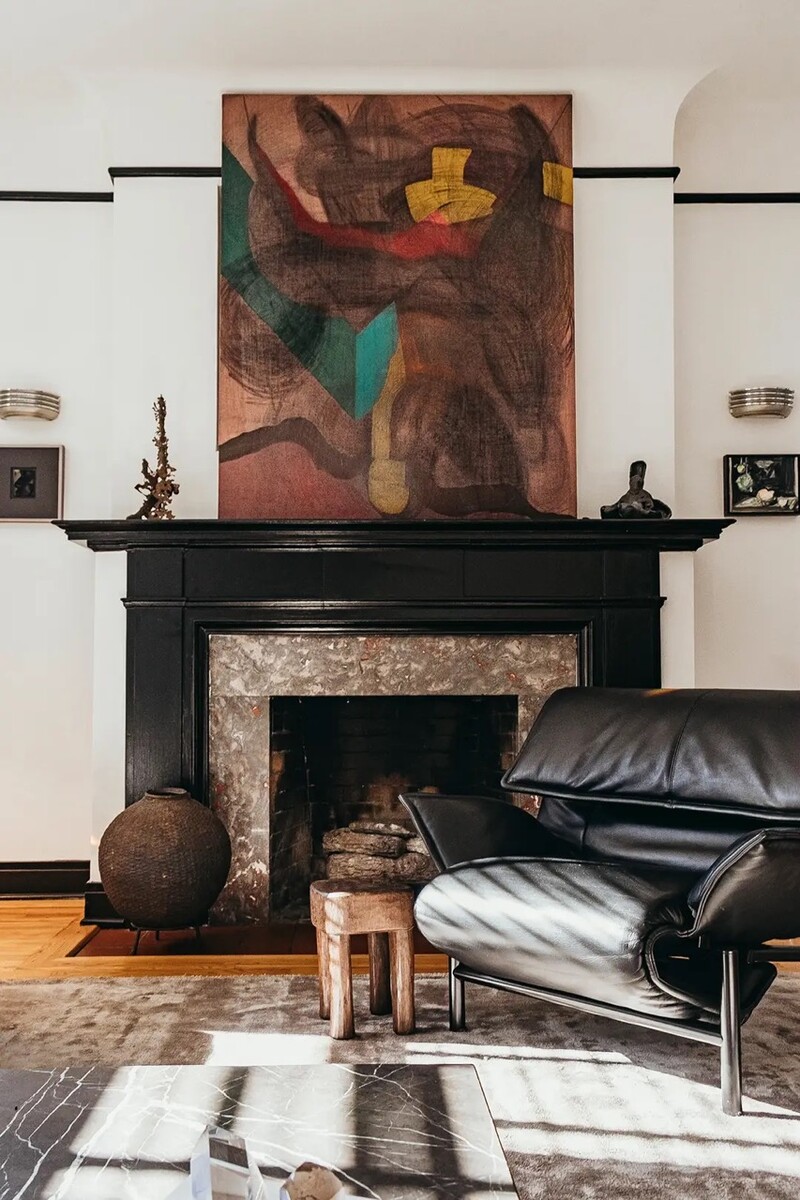
As for the “99 Lakeshore Drive” lettering above the kitchen cabinets: “That was just there, so I left it. I like anonymous sculptures, things with no history or signature to them,” he says. The ceramic dog in the kitchen was gifted to him by his father 15 years ago. “It’s actually a fountain, with holes in its mouth and private parts,” he says. “When I saw it, I was like: ‘This is the best thing you’ve ever given me.’”
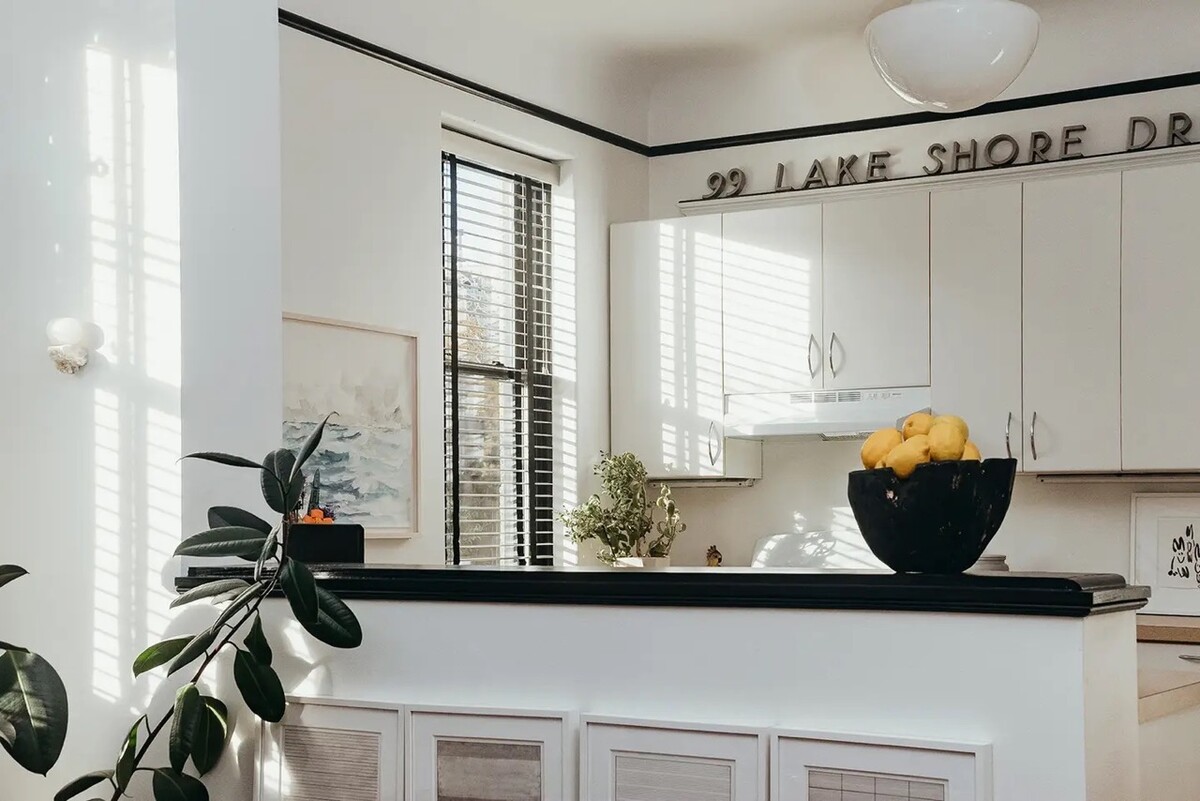
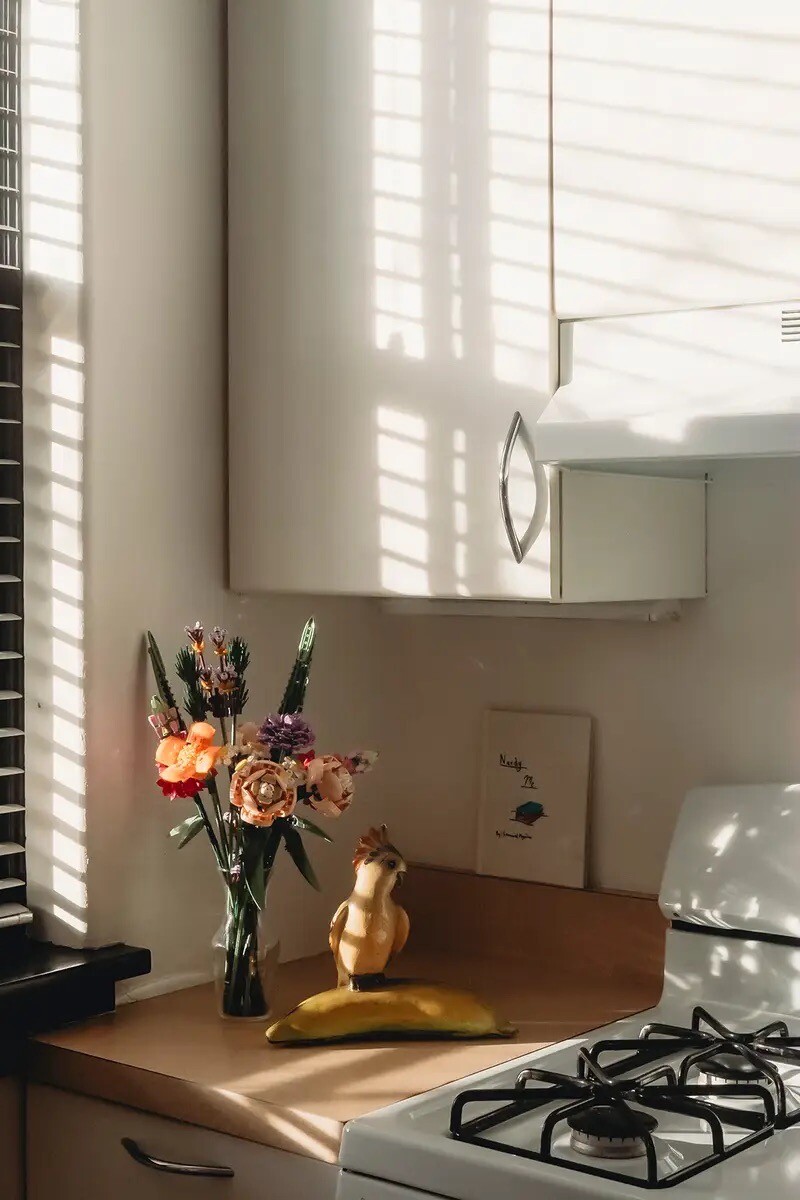
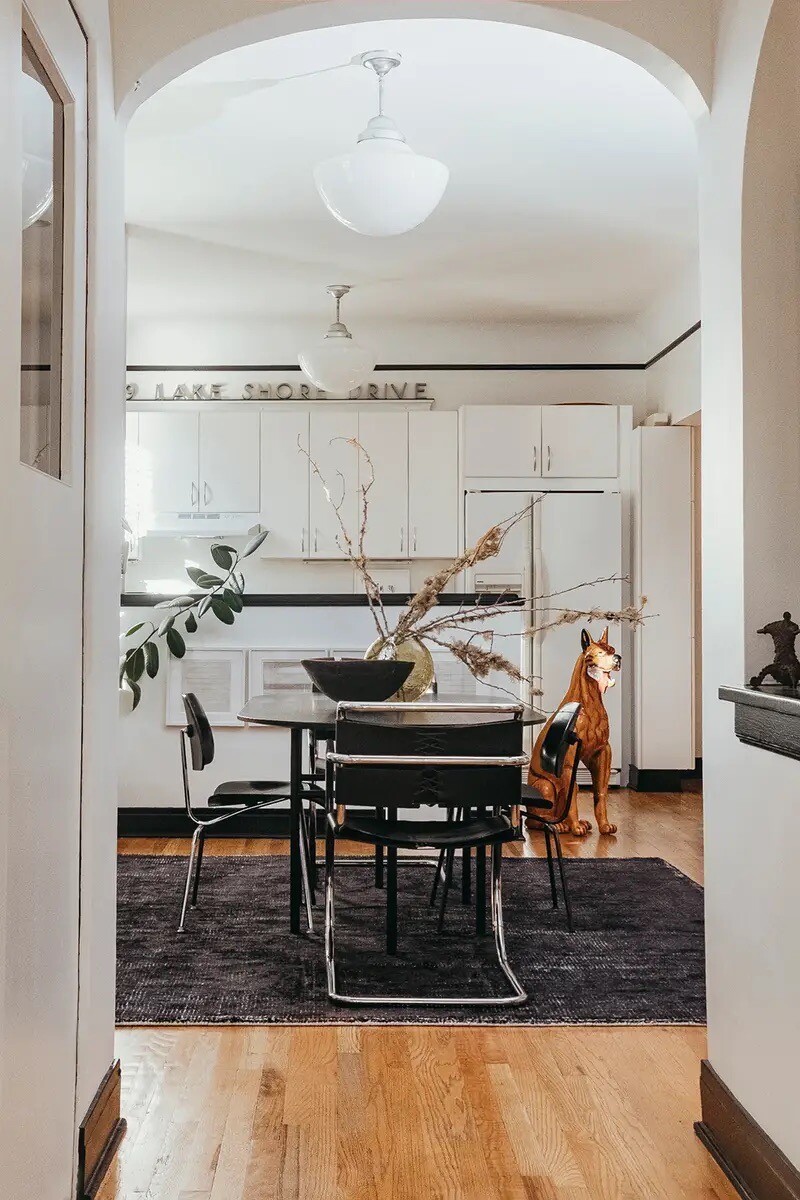
From a corner of the dining room, a potted plant reaches toward the sunlight. Its leaves graze a wall-mounted work by the Chicago artist Alex Chitty (For Another Who Isn’t, But Never Ceases to Be, 2016), forming an organic sculptural moment aided by plastic structural supports added by Aguilar’s housekeeper. “It feels even more special because it’s been touched by a mind and a decision: She taped them to the core of the plant to hold it up,” he explains. Literally and figuratively, growth invites intervention and change.
“Time is an element. I’m not someone who likes to look at the same things forever—I like the idea of evolution,” says Aguilar. “To me, this is the perfect space for that.”

The first time Emanuel Aguilar walked through his empty apartment, he couldn’t stop marveling at its curves. The cove ceilings, crescent-shaped sconces, and subtly rounded kitchen cabinet pulls—along with an abundance of natural light—added up to a restful softness that pulled him in immediately. He was also drawn to its unique past: Situated on the first floor of a classic Chicago two-flat in the city’s Graceland West enclave, the apartment had originally functioned as the medical practice of a doctor who designed the building for live-work life in the 1920s, with his home upstairs.

“There’s all this beautiful history in the intent of how it was built, like the little nook between the dining and living rooms that used to be the reception desk opening. I love that this space isn’t generic—it was created with a purpose,” says Aguilar, a curator and the cofounder of the contemporary gallery Patron. “It reminds me of what I look for in art.”


It also contained an essential feature: a high-functioning floor plan. “I watch a lot of HGTV, and I struggle with the contemporary approach to layouts where everything is just one big room. But I also love flow,” he says. Here, Aguilar found the best of both.



The apartment, owned by longtime friends, was in excellent shape when Aguilar got the keys, and his “renovation” required little beyond a few coats of paint. (Benjamin Moore’s “Super White” is used throughout, along with the brand’s basic black for select trim.) And while most people might have taken out the door placards, which date back to the space’s roots, Aguilar would never. He loves instructing guests to drop their bags in the “X-ray” room. The door to the basement is still marked, spookily, “Laboratory.” His own bedroom—formerly the doctor’s personal office, with the original high-shine black linoleum floors to prove it—features a “Private” door plate. The “Washroom” sign is a convenient reminder of the room’s obvious purpose.

With the decor, Aguilar leaned into a grayscale palette. “I put objects with objects to tell stories for a living,” he says. “When I’m at home, I want to be able to just wander in my mind, as opposed to thinking about how red or whatever color evokes a connection to something out in the world.” Boutique and box-brand pieces are mixed with vintage finds from local dealers like Dial M for Modern, CircaModern, and Scout.

The resulting rooms put modernism and 1970s Italian design in fluent dialogue with the Art Deco architectural backdrop. Chairs by Mies Van Der Rohe flank the dining table that occupies the former exam room (the other two are Eames). A leather lounger by Vico Magistretti in the patient waiting room–turned–living room is paired with a low-slung modular sofa from Hay, and the marble coffee table is by Audo Copenhagen.

Aguilar’s expansive art collection enlivens the conversation. Guests are greeted in the front hall by a floating orange sphere—Martha (2001) by McArthur Binion—and a life-size papier-mâché skeleton purchased in Coyoacan, Mexico, near Frida Kahlo’s Blue House. A large gestural abstract by Brooklyn-based artist Kaveri Raina, titled Revolt; Internal Brewing Slow Rage (2021), sits on the mantel in the living room. (The stunning fireplace, however, is not working at the moment. “It’s conceptual,” Aguilar jokes.)

As for the “99 Lakeshore Drive” lettering above the kitchen cabinets: “That was just there, so I left it. I like anonymous sculptures, things with no history or signature to them,” he says. The ceramic dog in the kitchen was gifted to him by his father 15 years ago. “It’s actually a fountain, with holes in its mouth and private parts,” he says. “When I saw it, I was like: ‘This is the best thing you’ve ever given me.’”



From a corner of the dining room, a potted plant reaches toward the sunlight. Its leaves graze a wall-mounted work by the Chicago artist Alex Chitty (For Another Who Isn’t, But Never Ceases to Be, 2016), forming an organic sculptural moment aided by plastic structural supports added by Aguilar’s housekeeper. “It feels even more special because it’s been touched by a mind and a decision: She taped them to the core of the plant to hold it up,” he explains. Literally and figuratively, growth invites intervention and change.
“Time is an element. I’m not someone who likes to look at the same things forever—I like the idea of evolution,” says Aguilar. “To me, this is the perfect space for that.”

